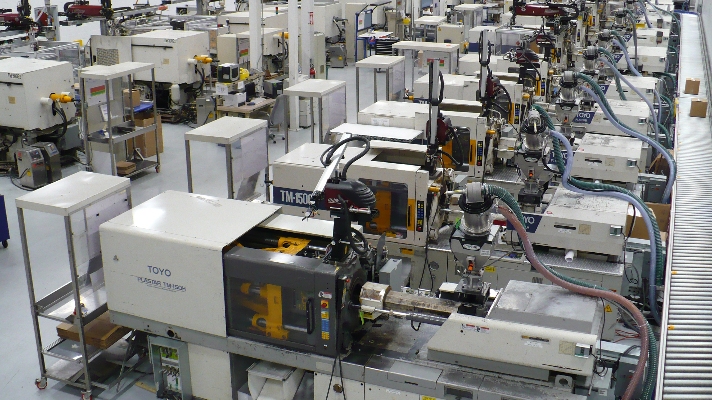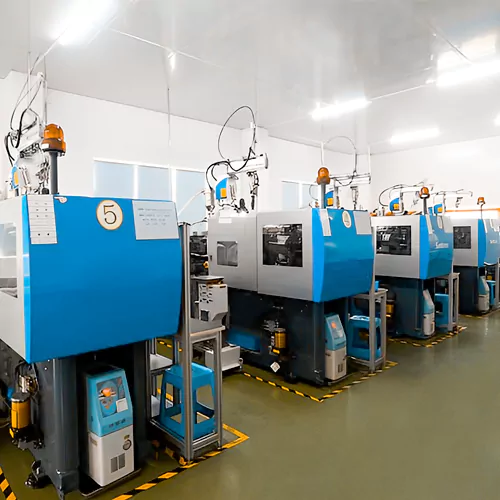Just How Plastic Injection Molding Drives Performance in Automation
Just How Plastic Injection Molding Drives Performance in Automation
Blog Article
The Future of Plastic Shot Molding: Trends and Technologies to Enjoy
As the plastic shot molding market advances, a number of vital trends are arising that promise to improve its landscape. Automation and clever manufacturing methods are set to boost efficiency, while the change towards lasting products reflects an expanding environmental awareness.
Automation and Smart Production
As the plastic injection molding sector develops, automation and wise manufacturing are taking center phase, transforming production processes - Plastic Injection Molding. The assimilation of innovative innovations such as robotics, IoT (Net of Things), and expert system is making it possible for suppliers to boost effectiveness, minimize functional prices, and enhance item high quality. Automated systems simplify process, decreasing hands-on treatment and enhancing throughput, which is important in meeting the climbing need for rapid manufacturing cycles
Smart making innovations facilitate real-time surveillance and data analysis, enabling business to maximize maker performance and anticipate upkeep needs. This positive approach not only reduces downtime yet additionally prolongs the lifespan of equipment. The use of collaborative robotics, or cobots, boosts the flexibility of production lines, making it possible for workers and equipments to run side by side securely and effectively.
The fostering of automation in plastic shot molding is not simply a fad but a critical important for businesses intending to continue to be competitive in a global market. By taking advantage of these technologies, producers can accomplish higher accuracy, reduce waste, and adjust quickly to altering customer demands, positioning themselves for sustainable growth in a progressively computerized future.
Sustainable Materials and Practices
The press in the direction of automation and clever production has actually led the way for a greater focus on sustainable materials and methods within the plastic injection molding market. Companies are significantly looking for environment-friendly options to standard petroleum-based plastics, leading to the adoption of recycled and bio-based materials. These sustainable materials not only minimize environmental influence however also align with consumer demand for greener items.

Furthermore, collaboration in between manufacturers, product suppliers, and environmental organizations is fostering development in the growth of sustainable materials that fulfill efficiency criteria without compromising high quality. As policies around plastic usage come to be stricter, the market is positioned to adapt by accepting these lasting methods, making certain long-lasting feasibility and decreasing dependence on non-renewable resources. The combination of sustainability right into plastic injection molding is not merely a pattern; it is ending up being a crucial element of corporate duty and functional excellence.
Advances in 3D Printing
Current advancements in 3D printing technology are significantly transforming the landscape of plastic injection molding. The assimilation of additive production procedures permits for the fast prototyping of intricate geometries that were once difficult or impossible to achieve through typical methods - Plastic Injection Molding. This capacity not just increases product development cycles yet additionally decreases material waste, aligning with the growing demand for sustainable manufacturing techniques
Moreover, the appearance of hybrid production techniques, which integrate 3D printing and try these out shot molding, provides manufacturers the ability to develop complex layouts while preserving the performance of mass production. This strategy enables the manufacturing of tailored components tailored to certain client demands without compromising the rate and scalability that shot molding gives.
Furthermore, advancements in products, such as high-performance polymers and compounds specifically developed for 3D printing, are boosting the practical abilities of printed components. These products can withstand higher stress and anxiety and display boosted thermal buildings, making them ideal for more requiring applications.
As 3D printing remains to develop, its combination into plastic injection molding processes promises to enhance efficiency, minimize expenses, and foster technology in item design, placing suppliers to much better satisfy the challenges of an open market.
Information Analytics and IoT Assimilation
Information analytics and the integration of the Web of Things (IoT) are changing plastic injection molding by supplying manufacturers with unmatched understandings into their procedures. By leveraging real-time information gathered from interconnected machines look at here and sensing units, manufacturers can monitor performance metrics, recognize inefficiencies, and maximize manufacturing procedures. This data-driven method facilitates predictive upkeep, decreasing downtime and expanding tools lifespan.
Furthermore, IoT assimilation allows for enhanced quality assurance. By continually tracking variables such as temperature, cycle, and pressure times, suppliers can promptly spot inconsistencies from developed criteria and make adjustments in real time. This not only boosts product uniformity however likewise decreases waste and scrap rates.
The blend of data analytics and IoT modern technologies additionally encourages makers to adopt more nimble production strategies. With accessibility to comprehensive information analytics, organizations can react to market demands with higher adaptability, adjusting production timetables and setups as required. This flexibility is important in a quickly altering manufacturing landscape.

Modification and Design Adaptability
How can customization and design flexibility enhance the competition of plastic injection molding? Personalization allows producers to meet details customer requirements, accommodating unique dimensions, shapes, and capabilities that common products might not satisfy.
Developments in style innovations, such as computer-aided layout (CAD) and quick prototyping, additional boost this trend. These tools enable designers to create elaborate patterns and intricate geometries, which can be seamlessly incorporated into the production process. Consequently, manufacturers can react quickly to altering customer preferences and market demands.
Moreover, the implementation of modular tooling systems improves style versatility, enabling quicker changes in between different product layouts without considerable downtime. This flexibility can bring about decreased lead times and reduced manufacturing expenses, making business much more active and affordable. Eventually, welcoming personalization and layout flexibility in plastic shot molding not only elevates product offerings however also strengthens market positioning in an ever-evolving landscape.
Conclusion
The future of plastic injection molding is identified by considerable developments in automation, sustainable practices, and ingenious products. The assimilation of IoT and information analytics will certainly improve operational effectiveness and predictive upkeep. In addition, the adoption of recycled and bio-based products, together with progression in 3D printing, will cultivate sustainability within the market. Customization through modular tooling and rapid prototyping will enable producers to remain competitive and responsive to the dynamic demands of the market.

The future of plastic injection molding is characterized by substantial developments in automation, lasting practices, and innovative materials.
Report this page